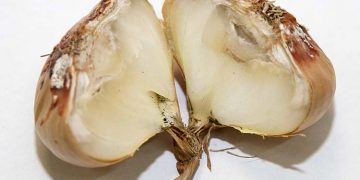CropDisease #OnionProduction #FungalInfection #Agriculture #WhiteRotPrevention #SclerotiumCepivorumControl
White rot, caused by the fungal pathogen Sclerotium cepivorum, is a serious and widespread disease affecting onion crops worldwide. This fungal disease is highly destructive, and once it takes hold in a field, it can cause significant crop losses, resulting in economic losses for farmers and affecting the availability and cost of onions for consumers.
The development of white rot begins when the fungal spores in the soil come into contact with the onion roots. The fungus then grows into the plant, causing it to wilt, turn yellow, and eventually die. As the fungus spreads, it forms sclerotia, small black bodies that can survive in the soil for several years, infecting future onion crops.
The consequences of white rot can be devastating for farmers, as it can lead to complete crop loss and a significant financial burden. To manage this disease, farmers must take preventative measures such as crop rotation, avoiding fields with a history of white rot, and using resistant onion varieties.
Research is ongoing to develop new control methods, including the use of biological control agents and fungicides. However, these methods can be expensive, and their effectiveness varies depending on the severity of the infection.
White rot caused by Sclerotium cepivorum is a serious threat to onion crops worldwide. To minimize the impact of this disease, farmers need to take preventative measures and stay informed of the latest research on control methods. With proper management, the impact of white rot on onion production can be reduced, ensuring a reliable and affordable supply of onions for consumers.


































